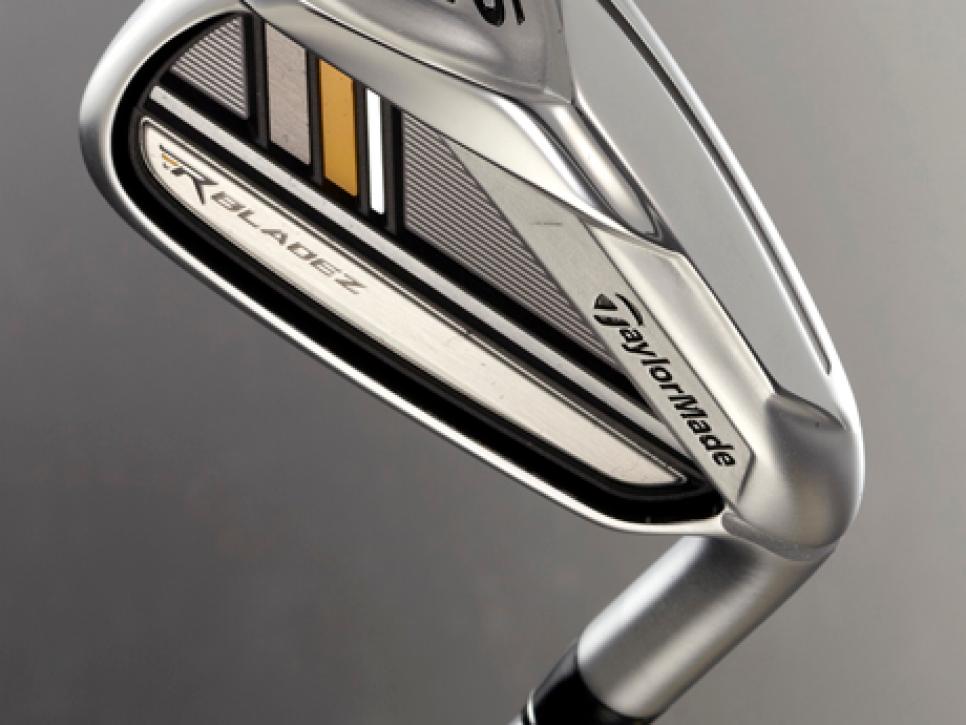The Loop
TaylorMade's King: "the biggest iron innovation to date"
Ever since Sean O'Hair used a prototype TaylorMade iron at the Justin Timberlake Shriners Hospitals for Children Open earlier this month, golfers have wondered when the new club would become available. That question was answered this morning when TaylorMade president and CEO Mark King announced via a global webcast the introduction of the RocketBladez iron, a club he referred to as, "the biggest iron innovation to date."
Although whether King's statement turns out to be true remains to be seen, there's no denying the iron is intriguing, notably for its "Speed Pocket." Inspired by the slot in the company's RocketBallz fairway woods and hybrids, the Speed Pocket is a two millimeter-wide slot in the sole of the 3- through 7-irons that is filled with a 3M polyurethane that flexes and rebounds at impact. According to TaylorMade engineers, the design, which includes a face 11 percent thinner (1.6 mm at its thinnest) than TaylorMade's previously thinnest iron face, promotes a faster ball speed combined with a higher launch angle.

The design was partly born out of research that showed 68 percent of iron impacts (by amateurs) are made below the center of the face. The Speed Pocket is designed to boost ball speed on such hits, and thus distance. The clubs are available for pre-order immediately and will sell for $799 (set of eight, steel) with graphite shafts costing an extra $100. A tour model (RocketBladez Tour) also will be available. The tour version, which also features the "speed pocket" design feature, is a cavity-back that is designed for enhanced speed while providing consistent distance. "It was eye-opening to watch our tour players hit these clubs," said Sean Toulon, executive VP for TaylorMade. "What they found was that they would pick up a club or even two in yardage, but with the same height and with very consistent distance. I can see this being the most-played iron on tour next year."
It is the fourth time in the last two years that TaylorMade has made the case for a breakthrough distance technology in irons, a hit parade that includes the Burner 2.0, the R11, RocketBallz and now RocketBladez. All four were built on the idea of making the face of an iron thinner and faster flexing to improve ballspeed. Indeed, these irons began producing spring-like effect numbers, the so-called "coefficient of restitution," that were in the neighborhood of the U.S. Golf Association rules limiting driver performance. The potential was to make irons with a COR of .820 or higher.
Traditionally, tour players have shied away from irons that promise faster faces and distance. Their long-held concern: the distance benefit of these irons is inconsistent, that there may be one area of the face that produces exceptional distance but the dropoffs from areas around that spot might lead to inconsistent and unreliable distance control.
TaylorMade's King makes the case that the RocketBladez iron could change the way tour players view irons, that the potential distance advantage could lead to a paradigm shift among elite players, the vast majority of whom still prefer smaller, rigid-faced muscleback blade type irons. Instead, the belief is that if tour players would switch to this new iron technology, you could see meaningful statistical improvements that begins with iron play and could run all the way through to scoring average.
In part driven by improved performance in drivers, fairway woods and hybrids, the intent in the RocketBladez design was to get the performance of longer and middle irons to close the widening gap between the shortest metalwood and the first iron in a player's set. For example, if a better, faster 3-iron can close the gap between the previous 3-iron and the now longer hybrid club, then it could mean that the 4-iron could then cover the distance that a 3-iron previously flew, and so on, leading to more shots to the green with shorter, higher lofted and easier to hit irons. In other words, players could be hitting 7-irons to the green instead of 6-irons, and since elite players are more accurate with 7-irons than 6-irons, there could be an increase in their proximity to the hole. Closer to the hole could lead to an increase in birdie potential, and thus improved scoring. As an example, the PGA Tour percentage of putts made doubles for putts from 20-25 feet versus putts over 25 feet. The tour iron is made from high-strength stainless steel (with a slightly tweaked version of the company's inverted cone technology) with distance gaps maintained through those technologies along with varying face thicknesses, center of gravity location (achieved by shortening the hosel to save weight and taking additional weight from the top of the club,then redistributing it all in strategic areas within the head) and shaft length. The tour irons will be available Feb. 1 and cost $899.